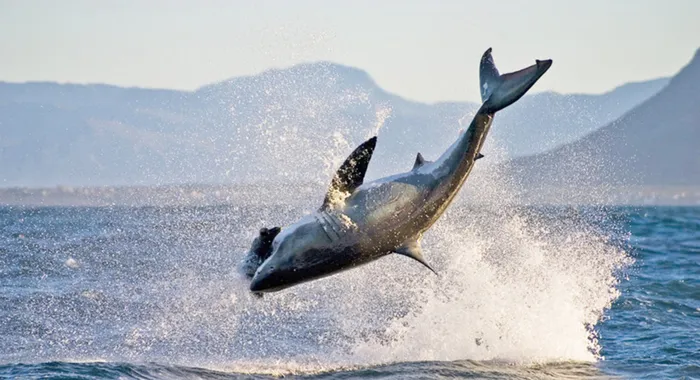
The magnificent great white shark (Carcharodon carcharias L.) is one of the oldest shark lineages with an evolutionary origin dating back to about 14 million years. New research from Stellenbosch University shows that the South African white shark population has the lowest genetic diversity of all white shark populations worldwide. In pic, the shark breaches at a dummy seal dragged behind a boat. Pictures: Sara Andreotti © www.sharkdivingunlimited.com The magnificent great white shark (Carcharodon carcharias L.) is one of the oldest shark lineages with an evolutionary origin dating back to about 14 million years. New research from Stellenbosch University shows that the South African white shark population has the lowest genetic diversity of all white shark populations worldwide. In pic, the shark breaches at a dummy seal dragged behind a boat. Pictures: Sara Andreotti © www.sharkdivingunlimited.com
Melanie Gosling
Environment Writer
THE genetic diversity of great white sharks along the South African coastline is the lowest of all great whites in the world – so low that their long-term survival may be jeopardised.
This was the finding of a team of researchers headed by Italian scientist Sara Andreotti, who sailed up and down the coast in a catamaran with Gansbaai shark cage diving Mike “Shark Man” Rutzen over four years, taking skin samples from 302 great whites for genetic sampling.
Their groundbreaking finding, published in the Journal of Biogeography, is not good news for these top predators.
They found 89 percent of all sharks tested on the South African coastline shared the exact same gene sequence. Andreotti explains if an animal population is genetically diverse, it is better able to survive events such as lethal disease or sudden changes in the environment because there will always be some whose genetic make-up enables them to survive and produce the next generation.
“A completely different scenario emerges when all the individuals share the same genetic information. If genetic diversity is needed to survive, but does not exist, it can quickly lead to extinction.”
It was a holiday trip to South Africa in 2007 to do shark cage diving and attend a course with shark conservationist Rutzen, who has become famous as the man who free-dives with great whites, that got Andreotti hooked on great white sharks.
“I became fascinated with how Mike communicates with them, and with the intelligence of sharks. I had just finished my master’s, and begged Mike to work with me, to translate his knowledge into scientific papers.”
At first they travelled around pulling a trailer, but that became too expensive, so they swopped to using a catamaran and over four years sailed through different parts of the coast from Port Nolloth to Port Elizabeth, focusing on the shark hot spots of False Bay, De Hoop, Gansbaai, Struisbaai, Mossel Bay and Algoa Bay.
They needed to get sharks close enough to photograph each unique dorsal fin – used for identification like human fingerprints – and to get skin samples. They used chumming to attract the sharks, and then a piece of tuna tied on a rope to entice them closer.
“It’s like a cat with a piece of wool, you have to give it something to chase. Some moved away, some played. We had to get their dorsal fin to break the surface so we could photograph it.” With a 2.5m pole with a sterilised biopsy instrument at the end, they took a tiny skin sample.
It is well known that great whites swim enormous distances, illustrated by the famous “Nicole” female which swam from South Africa to Australia and back. But what Andreotti’s research suggests is that the South African females do not mate with the Australian males.
“If they did, we would have found some DNA which is in between the two populations.”
The poor gene pool could be the result of a “population bottleneck”: an event such as an environmental disaster, habitat destruction or the hunting of a species to the point of extinction, which drastically reduces the size of a population. Those that remain have low genetic diversity.
Andreotti believes it is crucial that future conservation measures take the low gene pool into account. “A starting point would be to stop killing them legally, to stop the shark nets and baited hooks in KwaZulu-Natal that are designed to kill them. The white shark population… is not as healthy as we thought.”
melanie.gosling@inl.co.za
